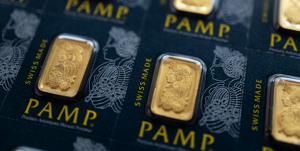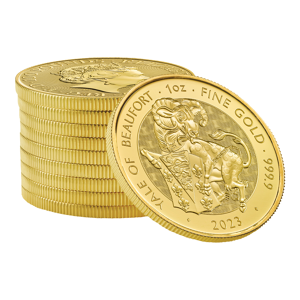Tavex uses cookies to ensure website functionality and improve your user experience. Collecting data from cookies helps us provide the best experience for you, keeps your account secure and allows us to personalise advert content. You can find out more in our cookie policy.
Please select what cookies you allow us to use
Cookies are small files of letters and digits downloaded and saved on your computer or another device (for instance, a mobile phone, a tablet) and saved in your browser while you visit a website. They can be used to track the pages you visit on the website, save the information you enter or remember your preferences such as language settings as long as you’re browsing the website.
| Cookie name | Cookie description | Cookie duration |
|---|---|---|
| tavex_cookie_consent | Stores cookie consent options selected | 60 weeks |
| tavex_customer | Tavex customer ID | 30 days |
| wp-wpml_current_language | Stores selected language | 1 day |
| AWSALB | AWS ALB sticky session cookie | 6 days |
| AWSALBCORS | AWS ALB sticky session cookie | 6 days |
| NO_CACHE | Used to disable page caching | 1 day |
| PHPSESSID | Identifier for PHP session | Session |
| latest_news | Helps to keep notifications relevant by storing the latest news shown | 29 days |
| latest_news_flash | Helps to keep notifications relevant by storing the latest news shown | 29 days |
| tavex_recently_viewed_products | List of recently viewed products | 1 day |
| tavex_compare_amount | Number of items in product comparison view | 1 day |
| Cookie name | Cookie description | Cookie duration |
|---|---|---|
| chart-widget-tab-*-*-* | Remembers last chart options (i.e currency, time period, etc) | 29 days |
| archive_layout | Stores selected product layout on category pages | 1 day |
| Cookie name | Cookie description | Cookie duration |
|---|---|---|
| cartstack.com-* | Used for tracking abandoned shopping carts | 1 year |
| _omappvp | Used by OptinMonster for determining new vs. returning visitors. Expires in 11 years | 11 years |
| _omappvs | Used by OptinMonster for determining when a new visitor becomes a returning visitor | Session |
| om* | Used by OptinMonster to track interactions with campaigns | Persistent |
| Cookie name | Cookie description | Cookie duration |
|---|---|---|
| _ga | Used to distinguish users | 2 years |
| _gid | Used to distinguish users | 24 hours |
| _ga_* | Used to persist session state | 2 years |
| _gac_* | Contains campaign related information | 90 days |
| _gat_gtag_* | Used to throttle request rate | 1 minute |
| _fbc | Facebook advertisement cookie | 2 years |
| _fbp | Facebook cookie for distinguishing unique users | 2 years |
What You Need to Know Before Investing in Gold

Throughout human history, gold has served as a medium of exchange. In addition to its role as a currency, it boasts a multitude of other applications, from crafting exquisite jewellery to playing a pivotal role in various industries.
Gold stands out as a secure asset, serving as a financial bulwark against the erosive effects of inflation. Unlike currencies that invariably depreciate over time, the value of investment gold remains steady and tends to appreciate over the long term.
This enduring value can be attributed to several factors, including its limited supply and the arduous process of mining, which helps investors preserve their purchasing power. More significantly, gold is intrinsically tied to value, making it a preferred instrument for both individuals and institutions, including central banks, looking to ensure portfolio stability.
In the following text, you will gain valuable insights into what you should know before venturing into gold investments.
Understanding Investment Gold

First and foremost, it’s essential to clarify the definition of investment gold. Numerous products are fashioned from this precious metal, each subject to specific supply and demand dynamics, price formation mechanisms, and legal considerations.
This distinction is particularly vital, as we’ll soon discover. Investment gold is a legally defined asset, and to attain this classification, a product must satisfy specific criteria.
Investment Gold Coins

For a gold bullion coin to be categorised as investment gold, it must meet the following criteria:
- Be minted (produced) after 1800.
- Have served or still serve as an official means of payment in its country of origin.
- Possess a minimum purity of .900 (equivalent to 21.6 carats).
- Be priced at no more than 80% of the spot price of the gold contained within it.
A notable example of a legal tender gold coin is the Gold Vienna Philharmonic. This popular Austrian coin carries a face value of 100 euros and holds the status of official currency.
Gold’s value as investment gold far exceeds its nominal worth when buying or selling in the bullion market
Gold coins can range in denominations from one troy ounce to 1kg and more.
Investment Gold Bars

Given that gold bars represent specific quantities of gold obtained through casting or forging, their requirements are less stringent. The purity of these bars must be at least .995 (equivalent to 23.88 carats), although reputable manufacturers, such as Swiss Valcambi and Argor-Heraeus, typically produce bars with a purity rating of 999.9.
Investment bars come in various weights, ranging from 1 gram, like the Tavex gold bar, to the 12.5-kilogram (400 ounces) bars commonly stored in central bank vaults. The latter serve as standard units for interbank transactions and are frequently featured in movies.
These standardised criteria ensure that investment gold remains a narrowly defined asset category, facilitating global trade for anyone in possession of such gold, with it being widley accepted by central banks and the London Bullion Market.
Storing Physical Investment Gold

The responsibility for safeguarding and storing purchased investment gold falls upon the buyer.
It can be stored in a bank safe deposit box, a home safe, or an alternative secure location
Given the soft nature of fine gold coins and bars, they are susceptible to damage, which can devalue the product. To prevent this, consider the following precautions:
- Avoid removing coins or bars from their original packaging, which often includes plastic capsules or hermetically sealed materials.
- Always handle coins and bars by their edges to prevent direct contact with the surface, as fingerprints can reduce their value irreparably.
- If handling physical gold products is necessary, wear clean, white cloth gloves to minimise the risk of damage.
- Refrain from sliding coins across surfaces; instead, place them on a clean, soft surface, ideally a velvet pad. For harder coins (with purity levels of 900 – 917), a clean, soft cloth or piece of paper may suffice.
These guidelines predominantly apply to extremely high purity (.999) gold coins and bars. Many historical gold coins bear evidence of circulation, with scratches and other marks, yet their market value remains intact.
Investment Gold and Tax Free Exemptions
Gold products that meet the criteria for investment gold are exempt from Value Added Tax (VAT free) in the UK and other European Union member countries. Additionally, some investment gold products in the UK are exempt from capital gains tax. In the UK this is only valid on gold coins produced by The Royal Mint.
Why Invest in Gold?

Gold stands as an effective shield against inflation and serves as a secure form of long-term savings in an investment portfolio.
- Preservation and Appreciation of Value: Unlike various fiat currencies worldwide, which are continually printed and lose value due to inflation, gold maintains and appreciates in value. Over the past three centuries, its price has consistently risen, from $19.3 per ounce in 1792 to $2,050 per ounce today. Even over the last fifty years, the price of gold has exhibited remarkable growth. In the early 1970s, one gram of gold was approximately $2, whereas today, fifty years later, it commands approximately $65 per gram, marking a staggering 3000% increase. Gold serves as a dependable haven for individuals seeking to protect their wealth amid fluctuations in fiat currency values, as currency inflation is an inherent feature of global currencies, whose circulating supply constantly expands.
- Geopolitical Uncertainty: Ongoing geopolitical events, such as the conflict in Ukraine, disputes in Israel, trade tensions between the US and China, widespread protests, economic shutdowns, and recessions, have collectively eroded the value of paper currencies. Gold bars and coins enjoy universal recognition, unlike certain fiat currencies, making gold widely accepted even when some currencies are not. Additionally, gold always maintains a reference price, rendering it a safeguard not only against inflation but also in times of geopolitical turmoil.
- Limited Supply: Despite fluctuations in annual gold production over the past decade, ranging from 2.8 to 3.5 thousand tons, the overall global supply of gold remains finite. Expanding this supply necessitates substantial investments and time, and production has remained nearly static over the last five years. This limited supply contributes to gold’s stability as an asset, as sudden, drastic changes in supply are virtually impossible.
- No Counter-party Bankruptcy Risk: Purchasing physical investment gold carries no risk of counter-party bankruptcy. In this aspect, investment gold differs significantly from other investment categories. Historical instances like the 2008 banking collapse saw thousands of citizens investing in Lehman Brothers, a once-prestigious United States bank that vanished overnight, taking investors’ money with it. Similar situations unfolded with the collapse of the FTX crypto market, resulting in the loss of investments for thousands. With physical investment gold, such risks are nonexistent.
Factors Influencing the Price of Gold

The sale price of gold is subject to numerous influences. While the long-term gold market experiences relatively few shocks, short-term price fluctuations are commonplace. Several factors affect the market price of gold:
- Currency Exchange Rates: As gold is primarily denominated in US dollars, a weakening US dollar generally leads to an uptick in gold prices, and vice versa.
- Inflation: Both real and anticipated inflation rates and interest rates have an impact on gold prices. Additionally, central bank purchases of gold and its demand in various technological applications contribute to price variations.
- Overall Supply: The price of gold is also influenced by its global supply, which, similar to any other stock market investment, experiences short-term price fluctuations. Nevertheless, gold has consistently demonstrated its stability as a long-term investment.
Initiating Gold Investing
Buying from a reputable investment gold seller often yields lower premiums for larger quantities, offering more favourable prices per gram for bulk purchases. For example, buying a single 1 oz (31.1 g) gold bar is typically more cost-effective than acquiring 31 individual 1 gram bars.
Gold in Various Industries

Approximately 11% of the world’s gold production is utilised in various industries. Owing to its unique properties, gold finds applications in the medical, electronic, automotive, defense, aerospace, and even as a catalyst in multiple industrial processes.
Notably, an average iPhone contains around 30 mg of gold, and gold-plating is employed in hearing aids, inner ear implants, pacemakers, and stents used in artery disease treatment. Gold is also utilised in acupuncture needles and clinical research to combat diseases like cancer, malaria, and HIV.
This versatility underscores the invaluable role that gold plays across various sectors.


















